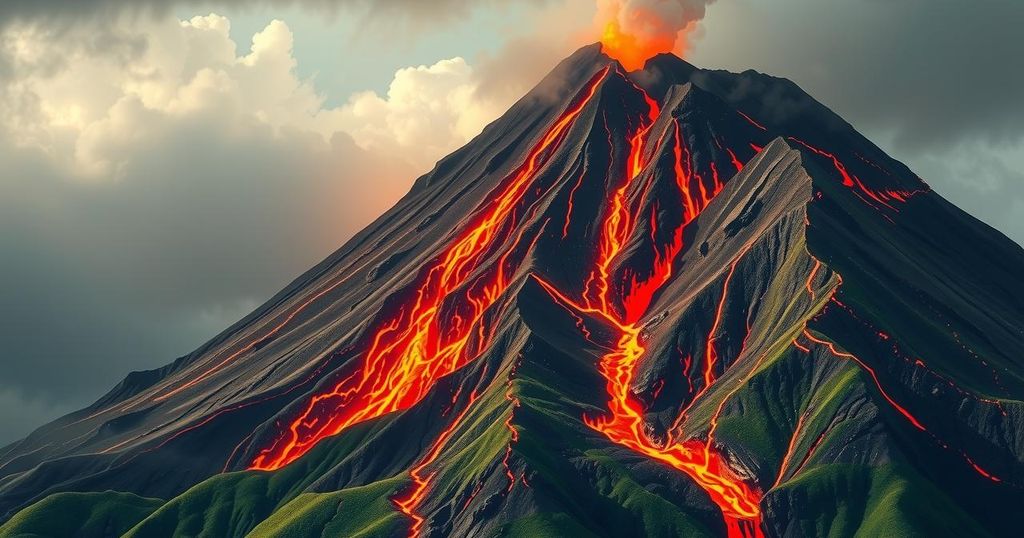On March 9, 2025, Fuego volcano in Guatemala erupted, prompting an Orange Alert and the evacuation of 900 residents. The eruption, marking significant activity after a dormant phase, produced ash clouds and pyroclastic flows, leading to safety measures and the mobilization of aid. Risks persist amid ongoing volcanic activity.
On March 9, 2025, the Fuego volcano in Guatemala erupted, resulting in the evacuation of approximately 900 residents. The National Coordinator for Disaster Reduction (CONRED) confirmed that 125 families from El Porvenir in Alotenango were relocated to a municipal hall prepared for temporary accommodation. The eruption was the first significant activity following a 49-day period of dormancy.
According to the National Institute of Seismology, Volcanology, Meteorology, and Hydrology (INSIVUMEH), the eruption began around 03:00 UTC and continued into March 10, generating incandescent fountains rising 500 meters above the crater. Columns of gas and ash reached altitudes of 6 kilometers, dispersing ash northwest and west over distances of 100 to 120 kilometers.
During the eruption, pyroclastic flows traveled down several ravines, including Las Lajas and El Jute, accompanied by explosive sounds likened to a train engine audible from several kilometers away. In response to the escalating danger, an Orange Alert was swiftly declared, indicating significant risk and prompting an emergency response plan.
Guatemala’s alert system includes a four-tier structure, starting with a Green Alert, progressing to Yellow and Orange, with the Red Alert indicating mandatory evacuations when necessary. Following the Orange Alert, CONRED mobilized humanitarian assistance for evacuees, coordinating efforts with local leaders to ensure safety and response efficiency.
The government has temporarily closed National Route 14, a major highway connecting southern regions with the city of Antigua, and has suspended classes in several municipalities affected by the eruption. Ashfall has also raised health concerns in areas like San Miguel Pochuta due to respiratory risks and agricultural impacts.
CONRED has urged residents to adhere to official advice, avoid ravines due to lahar risks, and prepare emergency kits for at least 72 hours. Furthermore, the Guatemalan Volcanic Surveillance Observatory (OGVV) recommended air traffic precautions given the potential dispersal of volcanic ash due to strong winds. The tourism sector has also restricted access to the Fuego and Acatenango volcanoes amid these safety concerns.
Ongoing monitoring indicates that the risk of lahars remains elevated due to heavy ash deposits in ravines and continued seismic activity. Emergency services maintain readiness as the volcano continues to release pyroclastic flows and ash columns reaching up to 4.8 kilometers into the atmosphere. Fuego volcano, which reaches a height of 3,763 meters, is known as one of Central America’s most active volcanoes, with a historically devastating eruption occurring on June 3, 2018, that resulted in significant loss of life.
In summary, the eruption of the Fuego volcano on March 9, 2025, has led to the evacuation of hundreds of residents and the declaration of an Orange Alert due to heightened danger. Authorities and emergency services are mobilizing resources and coordinating safety measures while monitoring the volcanic activity closely. The situation remains critical as experts warn of ongoing risks, including ashfall and lahars, necessitating continued vigilance from both residents and governmental agencies.
Original Source: watchers.news




